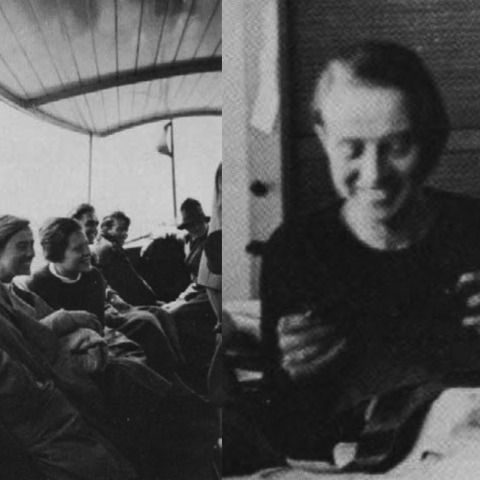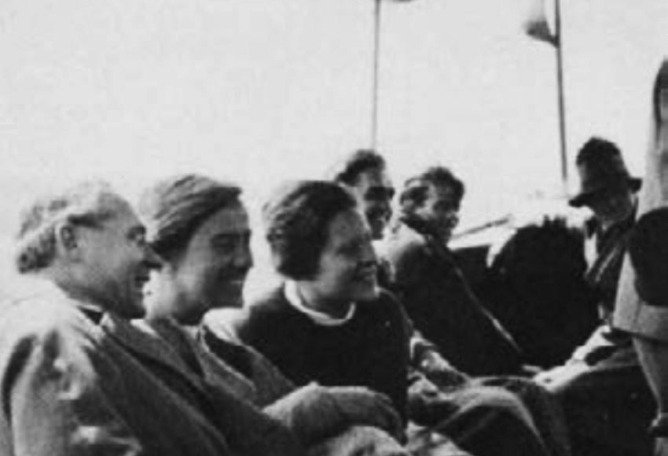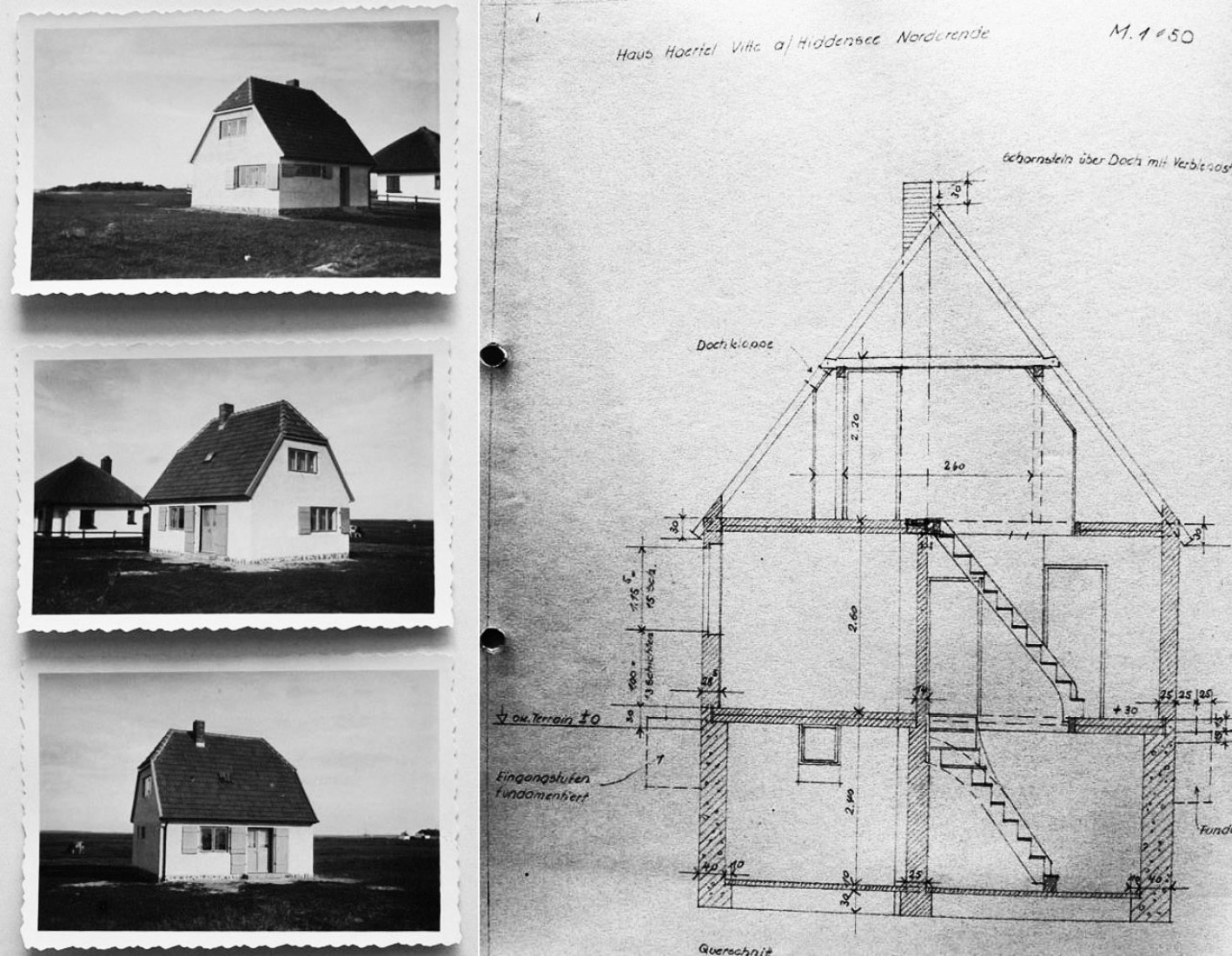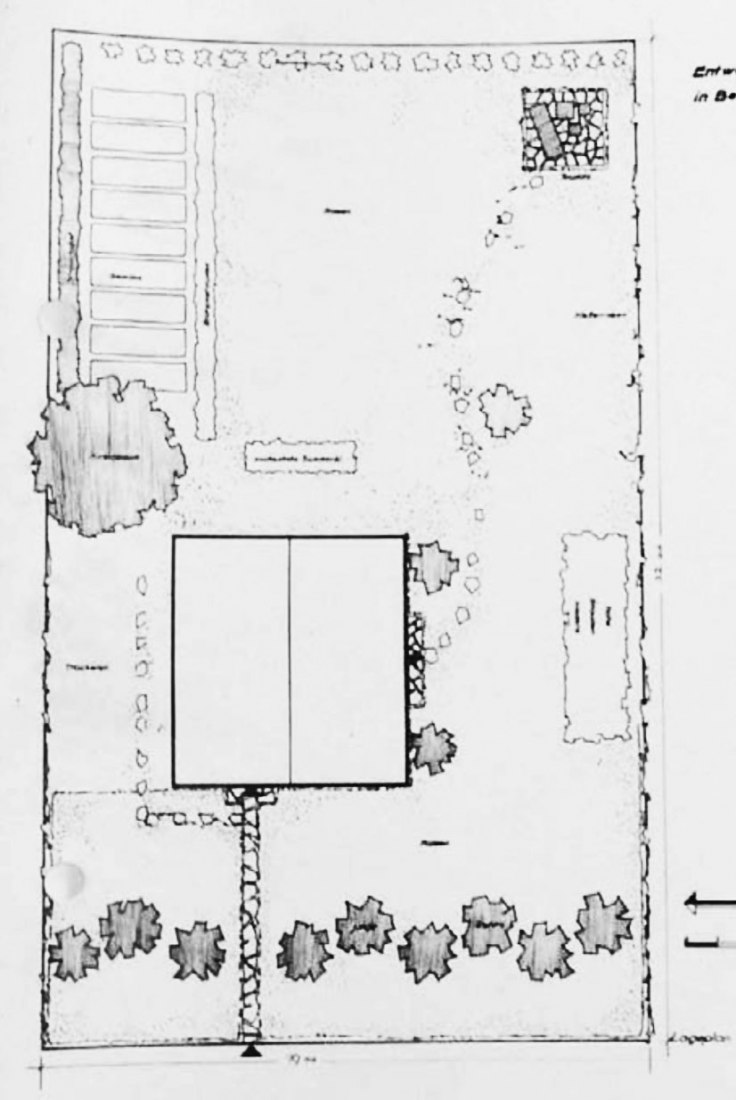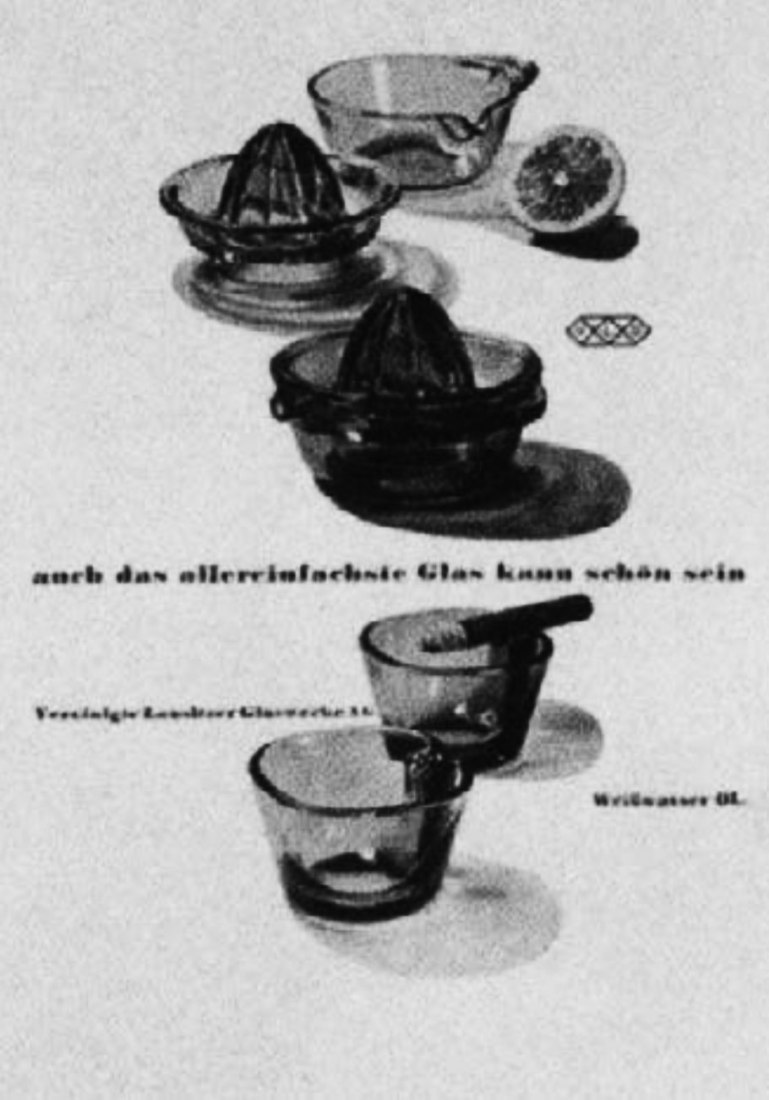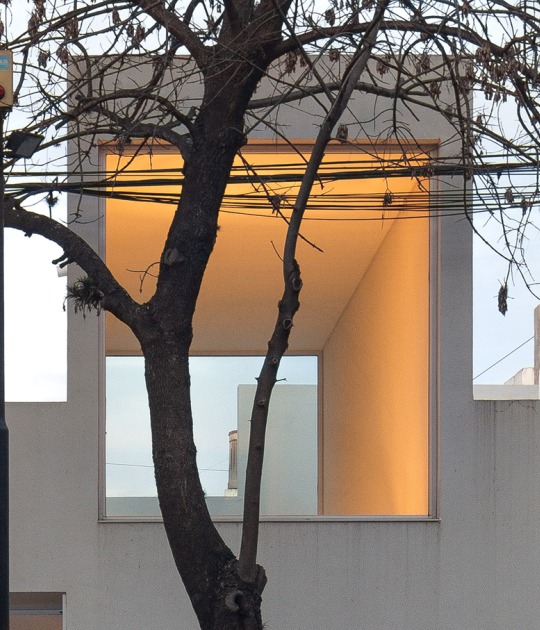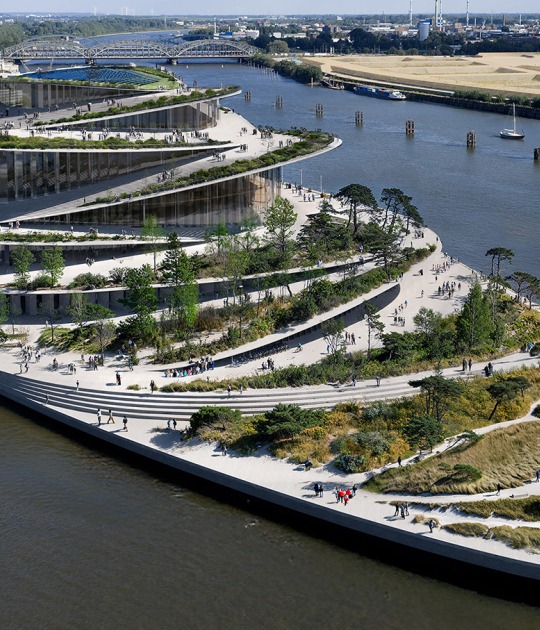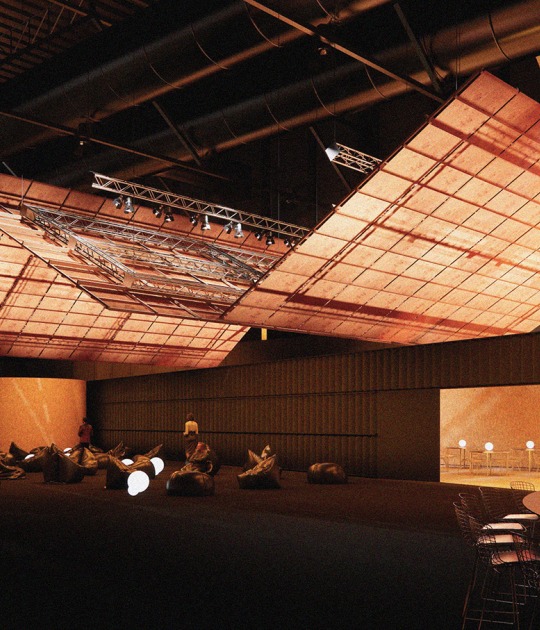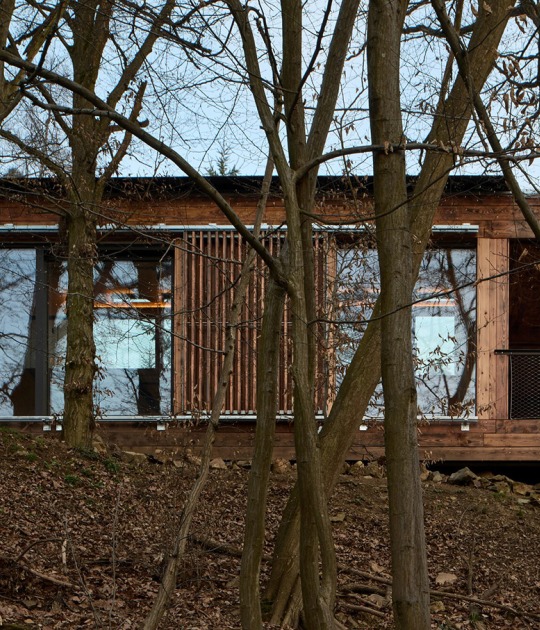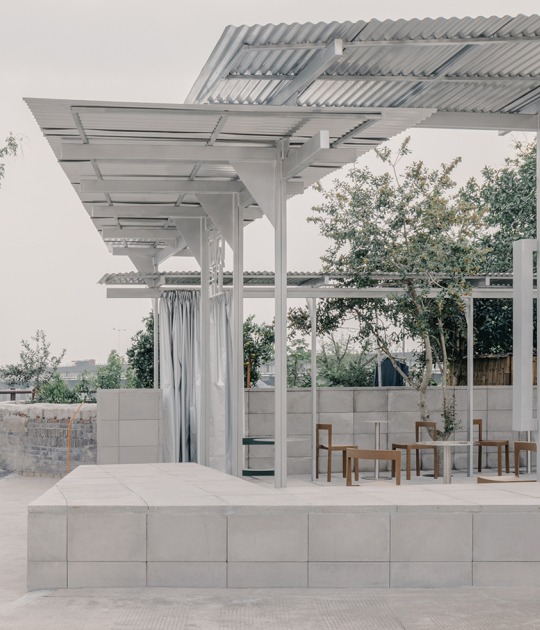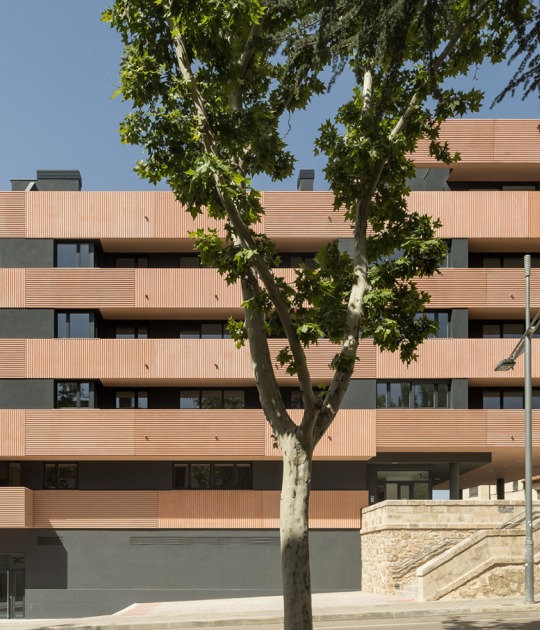"I was brought up like a boy, did not have any girl-friends." After completing the 10th grade of the Lyceum at the Falkenplatz, Anne- marie Wilke completed a commercial apprenticeship at the Lübeck commercial school, followed by a two-year apprenticeship.(2)
Annemarie Wilke specialized in housing projects and interior design. Her projects are characterized by the use of sloping roofs, with common materials and shapes, because the flat roof in houses was not allowed in many places. Despite being able to practice her profession, she did not have the luck to project and carry out large projects. Among the works carried out we can find the following homes.
Housing of Berlin-Zehlendorf
The house in Berlin-Zehlendorf reflects a similarity to the house of Dr. Blumenthal made in the same neighborhood by another member of the Bauhaus and professor, Ludwing Hilberseimer in 1932. A non-casual influence, a consequence of the teaching relationship in the Bauhaus and the knowledge transmitted and received, in addition to having collaborated with him in the plans of the execution project of the house Am Rupenhorn.
The house has a structure formed by several bays, the largest in the lounge area with 4 meters of light, compared to 2.8 meters in the kitchen. The building has an orientation to the Southeast to open large windows and capture more light. In addition, the access to the house is made through an almost blind façade oriented to the Northwest, as we can also see in the house of the Wilskistrasse nº66 of Hilberseimer. With this arrangement Annemarie proposes a simple entrance with a minimum marquee on the access door.
Housing for Mrs. Trude Schulze in Klausdorf
The house made for Mrs. Trude Schulze in Klausdorf (Germany) shows a traditional appearance on the outside. However, inside, the house is organized with a free floor similar to those made by Mies Van der Rohe. As for the organization of uses, it includes two routes: The first one connects the kitchen-dining room, office and bedroom. The second route consists of the bathroom, dressing room, office and bedroom, and ends in a terrace open to the living room.
In addition to designing homes, in 1937 Annemarie participated, together with Lilly Reich, in the German Pavilion directed by Mies Van der Rohe for the Universal Exhibition in Paris, an exhibition of the German textile and clothing industry. Annemarie designed the showcases used to display some objects of the work with a structure supported by heavy wooden pedestals.(3)
In 1939, Annemarie left Berlin and moved to Vienna, before the start of World War II. There, he met the engineer Mauck with whom she created a family. Between 1945 and 1946, she designed her own family home called "Housing project for engineer Mauck". In 1947 the whole family moved to Lübeck where Annemarie set up her own architecture studio where she carried out projects both for her husband's company (Maschinenfabrik auf der Teerhofinsel) and for clients in her city.(4)
Finally, the marriage separates and Annemarie closes her own studio. In the following years it was very difficult to get a job as an architect, so she worked in the furniture department of a department store, being one of the so-called "minor jobs" of the moment.
"In 1939, before I started the war, I married in Vienna and for almost 20 years I did not work as an architect, except in some minor jobs, until 1961 I did not start working, when I moved with my grown children to Munich, of course , not in architecture itself, but for a large commercial firm in the furniture department of a department store. To be able to work in an architecture studio, I not only needed time (I had to take care of my house), it is also that I could not. Being 20 years out of the profession is not easily repairable."(5)
Letter from Annemarie to Bruno Adler.
Annemarie Wilke died in Munich, July 1996.
NOTES.-
(1) Bock, Gisela y Thane, Pat: Maternidad y políticas de género. Ediciones Cátedra, Madrid 1996 (original 1991), p. 171.
(2) Corinna Isabel Bauer. Bauhaus- und Tessenow-Schülerinnen. Genderaspekte im Spannungsverhältnis von Tradition und Moderne. Doctoral thesis presented at the Department of Architecture - Urban Planning - Landscape Planning at the University of Kassel, Julio de 2003. Leida el 4.11.2003.
(3) Speer, Albert: Memorias. El Acantilado, Madrid 2008, pp. 150-151.
(4) Mcquaid Matilda: Lilly Reich. Designer and architect. MOMA, New York 1996. Article by Magdalena Droste “Lilly Reich: Her career as an artist”, p.57.
(5) Josenia Hervas Y Heras. Las mujeres de la Bauhaus: de lo bidimensional al espacio total. Madrid: Diseño Editorial, 2015, p. 366.
(2) Corinna Isabel Bauer. Bauhaus- und Tessenow-Schülerinnen. Genderaspekte im Spannungsverhältnis von Tradition und Moderne. Doctoral thesis presented at the Department of Architecture - Urban Planning - Landscape Planning at the University of Kassel, Julio de 2003. Leida el 4.11.2003.
(3) Speer, Albert: Memorias. El Acantilado, Madrid 2008, pp. 150-151.
(4) Mcquaid Matilda: Lilly Reich. Designer and architect. MOMA, New York 1996. Article by Magdalena Droste “Lilly Reich: Her career as an artist”, p.57.
(5) Josenia Hervas Y Heras. Las mujeres de la Bauhaus: de lo bidimensional al espacio total. Madrid: Diseño Editorial, 2015, p. 366.
